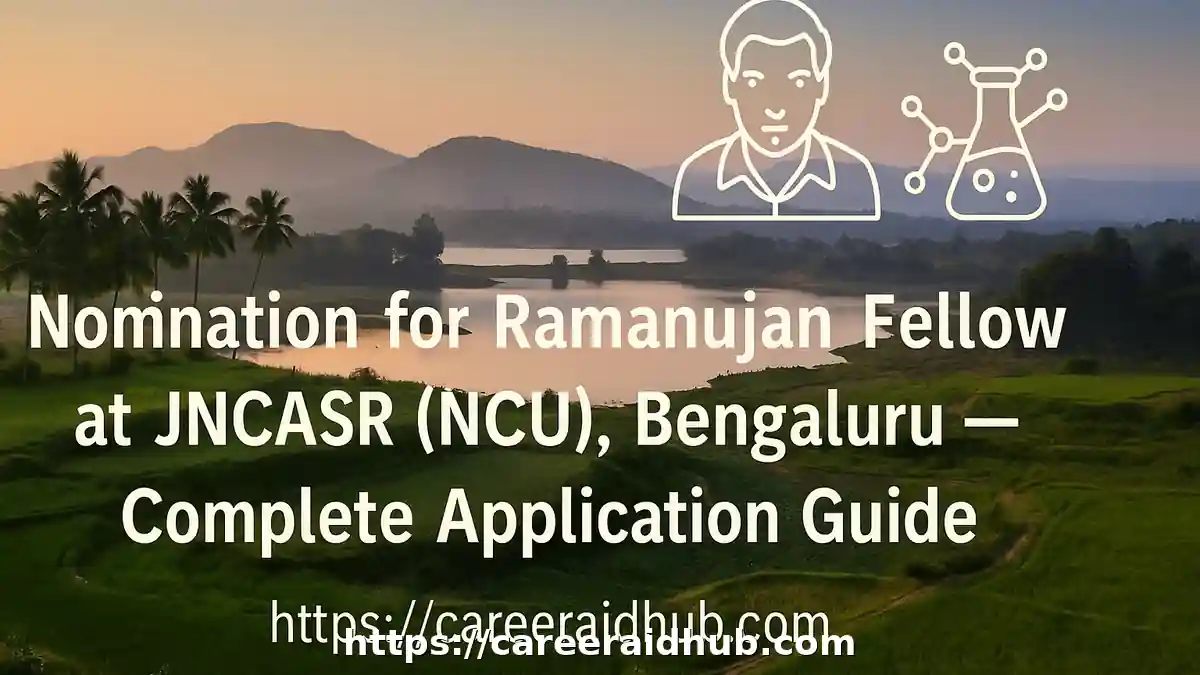The Professional Fellows Program (PFP) is a pragmatic exchange designed to help early and mid-career professionals convert leadership potential into sustained impact. Rather than a purely academic experience, it centers on hands-on placements with U.S. host organizations, structured leadership learning, and a follow-on Action Plan implemented back home. Consequently, fellows acquire applied skills, credible networks, and a plan to translate learning into public value.
The Professional Fellows Program (PFP) offers fully funded, skills-intensive U.S. placements for emerging leaders. Fellows collaborate with host organizations, build sector expertise, and return home to implement measurable Action Plans. This guide explains funding, eligibility, selection, timelines, and application strategy—so you can plan confidently and compete effectively.
What PFP Offers (At a Glance)
The PFP’s design blends immersion, mentorship, and post-program execution:
-
- Fully funded fellowship. International travel, J-1 visa support, accident/sickness coverage, and a modest living stipend are typically covered. This removes cost barriers and allows you to focus on learning.
- Custom host placement. You are matched with a government agency, NGO, university, think tank, startup, or social enterprise whose work aligns with your goals. You will join meetings, contribute to projects, and observe decision processes.
- Leadership curriculumand peer learning. Workshops, site visits, and cohort activities foster comparative insight across regions and sectors, which—importantly—broadens your policy and practice toolkit.
- Professional Fellows Congress (Washington, D.C.). Near the end of the U.S. phase, cohorts gather to share takeaways, pitch ideas, and build cross-regional collaborations that often endure long after the program.
- Follow-on Action Plan. Back home, you deliver a concrete initiative—training series, policy pilot, toolkit, or community program. Many tracks also offer reciprocal exchanges, enabling your U.S. host to visit your country and co-develop the next stage.
Placement Duration and Pace
Most cohorts schedule about 5–6 weeks in the United States. Because the calendars are intensive—often combining placement hours with workshops—time management and a clear learning agenda matter.
Who Should Apply
The program targets professionals who already shape policy, services, or community outcomes—and who can scale that influence.
Ideal Profiles
-
- Public-sector professionals advancing governance, rule of law, transparency, public finance, or local development.
- Civil society leaders working on inclusion, civic participation, youth leadership, or community resilience.
- Entrepreneurship and innovation actors—incubator managers, startup founders, ecosystem enablers.
- Social-impact practitioners across health, education, environment, urban development, and disability inclusion.
What Makes a Strong Candidate
Successful candidates typically demonstrate leadership trajectory, evidence of institutional or community impact, and a realistic plan to apply U.S. learning
Eligibility
Because PFP is implemented through multiple regional tracks, eligibility varies. However, common thresholds include:
Core Criteria
-
- Citizenship and residence in an eligible country for the track.
- Emerging/mid-career status with several years of relevant full-time experience.
- Professional fluency in English, adequate for meetings, presentations, and fieldwork.
- Availability to participate in the full U.S. program and complete post-fellowship requirements.
Country and Visa Status
- Applicants must be eligible for a J-1 exchange visitor visa and not be U.S. citizens or U.S. permanent residents.
Credibility and Ethics
Panels value consistent professional conduct, a track record of responsibility, and openness to cross-cultural contexts.
Tip: Always confirm the country list, sector theme, age guidance, and documentation on your specific track page before submitting. Requirements can change between cycles.
Fellowship Components
The PFP combines preparation, in-country immersion, consolidation, and follow-through. To make the most of it, approach each stage with a defined learning plan.
1) Pre-Departure Preparation
Prior to travel, fellows attend virtual orientations. These sessions clarify expectations, outline visa and logistics, and begin Action Plan design. Establish early metrics—who benefits, what changes, and how you will measure uptake.
2) U.S. Host
Placement (Core)
During placement, you embed with a host organization aligned to your goals. You will shadow leaders, support ongoing projects, attend stakeholder meetings, and—where appropriate—contribute deliverables. Treat this as a field laboratory: observe processes, capture artifacts (templates, SOPs), and adapt workable practices to your context.
3) Leadership Learning & Site Visits
Alongside day-to-day work, you will participate in workshops, policy briefings, and institutional visits. These experiences situate your placement within broader systems, revealing how financing, regulation, and partnerships interact.
4) Professional Fellows Congress
Near the end of the U.S. phase, cohorts convene in Washington, D.C. The Congress synthesizes sector learning and sharpens your Action Plan pitch. Prepare a concise narrative, a slide deck, and a one-page handout—stakeholders often request materials.
5) Action Plan & Follow-On
After returning home, you implement an Action Plan. Many tracks provide mentorship, small grants, and reciprocal exchanges that allow U.S. counterparts to visit and co-design the next steps. Track milestones, document outcomes, and share lessons with peers to sustain momentum.
Benefits You Can Expect
The PFP’s value lies in applied learning and post-program execution.
-
- Practical skill-building. Expect growth in project design, monitoring and evaluation, stakeholder mapping,advocacy, policy analysis, fundraising, and cross-cultural leadership.
- Professional credibility. The placement and Congress offer visible platforms that signal competence to partners and funders.
- Actionable networks. You will engage peers from multiple regions and U.S. mentors who can catalyze collaborations.
- Local impact. The Action Plan framework nudges you to deliver tangible benefits—new services, policy pilots, or institutional improvements.
- Practical skill-building. Expect growth in project design, monitoring and evaluation, stakeholder mapping,
Measuring Impact
Define early indicators (e.g., number of trainees, policy drafts produced, partnerships signed). Therefore, you can report outcomes credibly and attract continued support.
How to Apply (Step-by-Step)
The following roadmap mirrors common processes across tracks:
-
- Identify the right track. Review themes, eligible countries, and timing. Make a shortlist of two or three tracks that fit your profile.
- Prepare your dossier. Update your CV, gather proof of employment, secure references, and assemble relevant certificates.
- Write compelling essays. State the public problem, your achievements, and how U.S. learning will drive specific, measurable outcomes. Tie objectives to local policy or community needs.
- Submit the online form well before the deadline. Keep entries consistent across dates, titles, and results.
- Interviews & English checks. Some tracks include panel interviews or language assessments. Practice concise answers with evidence.
- Pre-departure tasks. Complete visa forms, medical/insurance documentation, and employer approvals.
- During the fellowship. Maintain a learning log, collect templates, and refine your Action Plan with mentor feedback.
- After the fellowship. Launch your Action Plan, publish results, and continue collaboration with your U.S. host.
Documentation Tips
Use searchable PDFs, clear file names, and headers with your name and program track. Consequently, reviewers can navigate your materials quickly.
What Selection Panels Look For
Reviewers assess potential for impact as much as past achievement.
-
- Leadership trajectory. Evidence that your ideas mobilize people—team leadership, coalitions, committees, or public initiatives.
- Problem clarity. A defined local challenge, supported by data or credible examples.
- Feasibility and impact. A six-to-twelve-month Action Plan with realistic milestones and measurable outcomes.
- Alignment. Your background and goals fit the track; the host match is plausible.
- Multiplying effect. Plans to share knowledge—train colleagues, open resources, or influence policy.
- Ethics and adaptability. Integrity, cultural humility, and readiness to learn.
Strong Application Tips
You can lift your application above the pack with intentional choices:
-
- Write for non-specialists. Eliminate jargon; define acronyms when essential.
- Quantify achievements. Prefer “trained 120 youth across six districts” over “led trainings.”
- Show systems thinking. Explain how your initiative nudges policies, incentives, and behaviors, not just immediate outputs.
- Secure institutional buy-in. An employer support letter strengthens feasibility and signals sustainability.
- Pre-map collaborators. List potential government, NGO, academic, or private partners who can co-own delivery.
Backlink-Friendly Extras
Add short case examples, early statistics, and named frameworks (e.g., logic models, outcome mapping). These elements encourage other sites to reference your guide.
Feature Details
|
Feature |
Details |
|
Program Name |
Professional Fellows Program (PFP) |
|
Host Country |
United States (with follow-on activities in fellows’ home countries) |
|
Funded By |
U.S. Department of State – Bureau of Educational and Cultural Affairs (ECA) |
|
Duration |
~5–6 weeks U.S. placement + post-program Action Plan (6–12 months typical) |
|
Study Mode |
Full-time, in-person U.S. placement; pre/post components often hybrid |
|
Eligibility |
Emerging/mid-career professionals from eligible countries; English proficiency; J-1 visa eligible |
|
Financial Support |
International travel, J-1 visa support, accident/sickness insurance, living stipend (program-provided) |
|
Fields |
Governance, civil society, entrepreneurship/innovation, social impact (health, education, environment), public administration |
|
Deadline |
Varies by regional track; next cycle expected Oct–Nov (will update soon) |
|
Official Website |
Conclusion
The Professional Fellows Program rewards clear thinking, credible plans, and ethical leadership. When you define the public problem precisely, align a host placement to your learning goals, and propose a measurable Action Plan, you markedly improve your chances. Use this guide to structure your dossier, diversify your evidence, and refine your narrative. Then, implement boldly and document results so that peers can adapt your model.
References
- U.S. Department of State — Exchange Visitor (J-1) Program overview: https://j1visa.state.gov/
Frequently Asked Questions (FAQs)
The PFP is a fully funded U.S. exchange placing emerging leaders with host organizations for 5–6 weeks, then supporting a measurable Action Plan at home.
Yes. It typically covers international travel, J-1 visa support, accident/sickness insurance, and a living stipend during the U.S. placement.
Emerging or mid-career professionals from eligible countries with strong English, relevant experience, J-1 visa eligibility, and the capacity to deliver a post-program Action Plan.
Placements usually run 5–6 weeks in the United States, followed by structured mentorship and implementation of your Action Plan in your home country.
Select the correct regional track, complete the online form, upload required documents, submit essays, and—if shortlisted—attend an interview and language assessment.
It is your post-fellowship project. You design a realistic initiative—training, policy pilot, toolkit—deliver results, and report outcomes after returning home.
Not always. Tracks require professional English proficiency; however, some may assess language during selection instead of requesting standardized test scores.
Yes. Public-sector professionals are welcome; nevertheless, you must secure employer approval for travel and post-fellowship project activities.
Implementing partners match fellows to hosts based on skills, goals, and thematic fit. Preferences help; however, final placements depend on availability and alignment.
Panels evaluate leadership trajectory, problem clarity, feasible Action Plans, sector alignment, ethical conduct, and the potential to multiply impact through partnerships and training.
Premium Mentorship for a Stronger Application
- Premium Mentorship: personalised 1:1 guidance for this and similar opportunities
- In-depth review of your CV, academic profile, and key statements
- Aligned with international selection criteria so your profile matches what panels expect
- Stronger, more compelling narrative for highly competitive calls
- Step-by-step support from opportunity mapping to final submission (fee-based)










